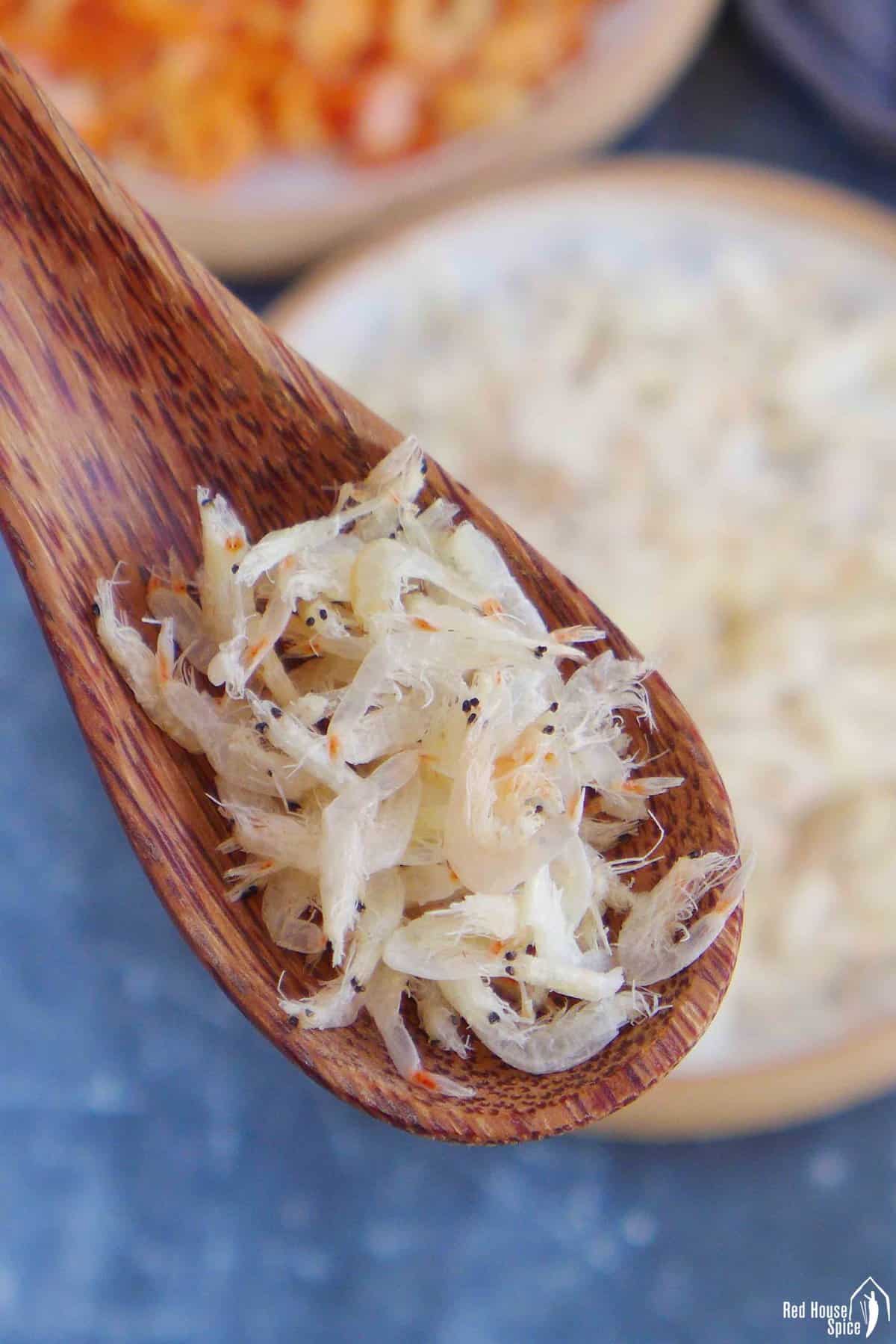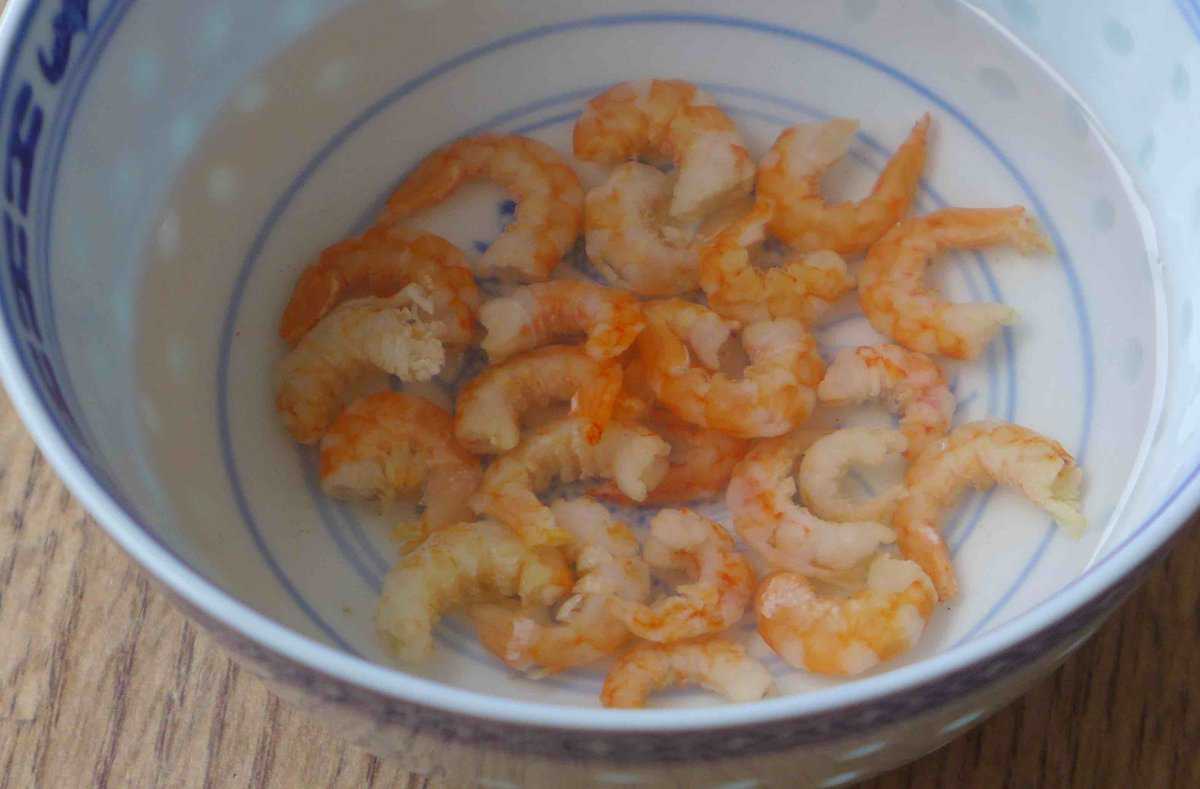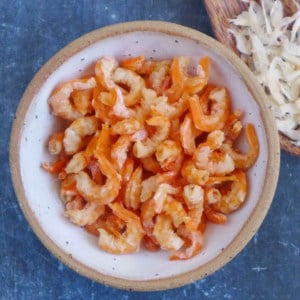A secret ingredient to rich umami taste, dried shrimp contributes to many delicious dishes. Here’s a how-to guide covering everything you need to know about it.
Dry shrimp are a versatile and flavorful ingredient used in many Asian cuisines. Though they may seem unfamiliar to some home cooks, dry shrimp are easy to incorporate into a variety of dishes. In this complete guide, we’ll cover everything you need to know about eating dry shrimp, from how to buy and store them to different cooking methods and recipe ideas.
What Are Dry Shrimp?
Dry shrimp, also called dried shrimp, are shrimp that have been dried and dehydrated They come in two main varieties
-
Regular dry shrimp have the head and shell removed before drying. They are orange in color and have a firm, chewy texture.
-
Papery dry shrimp are tiny shrimp dried whole with the heads and shells intact. They have a crisp, papery texture that’s edible.
Drying concentrates the shrimp’s natural umami flavor giving dried shrimp an intense briny-sweet taste. When rehydrated and cooked, they impart a rich savory depth to dishes.
Dry shrimp can be made from various shrimp species and come in sizes ranging from tiny to large. In Asian markets, you’ll often find them packaged in plastic bags.
Buying and Storing Dry Shrimp
When shopping for dry shrimp, look for ones with a vibrant orange color for regular style or beige for papery. Avoid any with signs of moisture or sliminess. The dry shrimp should look dry and crisp.
Check the packaging date and expiry date. Opt for packages without rips or tears. Once opened, transfer dry shrimp to an airtight container and store in the refrigerator for up to 2 months. You can also freeze them for longer storage.
The two main sizes of dry shrimp are:
-
Small dry shrimp range from 1/3 to 1 inch (1-2.5 cm) long. They work well for soups, stir fries, and as a seasoning.
-
Large dry shrimp can be over 1 inch (2.5 cm) long. Their larger size makes them ideal for stuffing dumplings or as a featured topping.
When a recipe simply calls for “dry shrimp”, it usually means the small, regularly dried variety unless specified.
Rehydrating Regular Dry Shrimp
Before using regular dry shrimp in cooking, you need to rehydrate them by soaking in hot water for 10-20 minutes. This softens their texture and draws out their sweet, briny flavor.
After soaking, the shrimp will become plumper as they reabsorb moisture. Reserve the soaking liquid to add to your dish too – it’s full of concentrated shrimp essence.
Once rehydrated, dry shrimp can then be chopped, minced, mashed into a paste, or kept whole depending on the recipe.
Cooking with Dry Shrimp
Dry shrimp lend complex savory flavors to many Asian dishes. Here are some of the most common ways to cook with them:
-
Soups and Broths: Add rehydrated dry shrimp or the soaking liquid to soups for umami depth. They’re especially good in noodle soups.
-
Stir Fries: Fry chopped dry shrimp with aromatics for a flavor boost. They go well with veggies like bok choy or green beans.
-
Dumplings: Mince rehydrated dry shrimp into the filling for shrimp dumplings, shumai, har gow, and more.
-
Noodles and Rice: Sprinkle dry shrimp over noodles dishes or stir into fried rice. Their briny sweetness enhances many Asian noodle and rice recipes.
-
Steamed and Braised Dishes: Add whole dry shrimp as a topping for fish or steamed veggies. Braise chopped dry shrimp into dishes like braised tofu or chicken.
-
Curries and Sauces: Mash dry shrimp into a paste to flavor curry pastes and sauces like XO sauce.
When cooking with dry shrimp, use a light hand as their flavor can become overpowering. A little goes a long way!
5 Delicious Ways to Eat Dry Shrimp
Here are a few recipe ideas that highlight dry shrimp’s uniquely savory taste:
-
Shrimp Dumpling Soup: Make dumpling fillings with dry shrimp, pork, and napa cabbage. Boil into a comforting soup.
-
Stir Fried Bok Choy: Sauté rehydrated dry shrimp with garlic, then mix with bok choy and oyster sauce for a quick veggie side.
-
Tom Yum Soup: Add dry shrimp, lemongrass, lime, and mushrooms for a hot and sour Thai soup.
-
Singapore Noodles: Toss rice vermicelli with curry powder, dry shrimp, shredded chicken, veggies, and scrambled eggs.
-
Shrimp Fried Rice: Fry beaten eggs with rehydrated shrimp, rice, peas, carrots, green onions, and soy sauce.
With their concentrated umami flavors, dry shrimp are a clever way to add instant taste to everyday dishes. Keep a bag handy in your pantry to punch up flavors anytime. Experiment with dry shrimp in your favorite Asian recipes to experience their magic.
Frequently Asked Questions
Are dry shrimp the same as anchovies?
No, dry shrimp and anchovies are very different. Anchovies are small forage fish, while dry shrimp are made from dried shrimp. They have distinctly different flavors and textures when cooked.
Do I need to remove the shells and heads of dry shrimp?
It depends on the type. Regular dry shrimp have already had the heads and shells removed before drying. But papery dry shrimp are dried whole with heads and shells on. These papery shells are edible and impart flavor, so you can cook with them directly.
What dishes use dry shrimp?
Dry shrimp are used in a wide array of Asian dishes. Some popular examples are dumpling fillings, stir fries, congee, fried rice, noodle soups, dipping sauces, steamed fish, and braised vegetable dishes.
Can I substitute dry shrimp for fresh shrimp?
Not directly. Dry and fresh shrimp have very different textures and flavors. For best results, adjust the recipe to account for dry shrimp’s concentrated taste. Use less dry shrimp than the amount of fresh shrimp called for.
How long do dry shrimp last in the fridge or freezer?
Properly stored, dry shrimp will keep for 2-3 months refrigerated. For longer storage, freeze dry shrimp for up to 6 months. Defrost frozen shrimp in the fridge before using.
With their intensive umami richness, dry shrimp are a valuable pantry ingredient for Asian cooking. Follow this guide to buy, store, and cook with dry shrimp for next-level flavor in all kinds of dishes.

What is dried shrimp
Essentially, dried shrimp are sun-dried or baked (after being boiled) shrimp that has been completely or partially dehydrated. There is no dish that is made without them, but they are an important part of many classics that change how they taste.
To me, it is like an “unsung hero” in dishes. Even though its small size (often finely chopped) makes it easy to miss, the flavor it adds is rarely forgotten.
Like popular Asian ingredients like fish sauce or shrimp paste, dried shrimp gives food a unique umami (Xiān Wèi/鲻味) taste, which means savoriness and is one of the five basic tastes. It goes well with any ingredient, but I think it really shines in dishes that are mostly made with plant-based ingredients, like g. Tofu and Vegetable Soup, Turnip Cake, and more.
There are two types of dried shrimp used in Chinese cuisine: regular ones and papery ones.
Regular dried shrimp

The most common one is known as Xiā Mǐ/虾米, Hǎi Mǐ/海米, or Gān Xiā Rén/干虾仁. They’re orange-looking, firm to the touch, and have their heads and most of the skin removed.
They come in different sizes, ranging from ⅓ to 1 inch (1-2½ cm). The bigger ones are usually more pricey, but I find smaller ones are equally good in flavor.
Papery dried shrimp

This type is known as Xiā Pí/虾皮, which means “shrimp skin” literally. They are tiny, beige-colored shrimp that have heads and tails intact. They don’t look as dry or firm as the regular version and have a crispy texture.
The taste of papery dried shrimp is milder than regular dried shrimp. It has a sweet undertone that I really like. They can be used directly without soaking.
You can cook dried shrimp in a lot of different ways, like in soups, broths, dumpling fillings, stir-fries, fried rice, fried noodles, braised or steamed dishes, and more.
Their flavor goes a long way, but they are only needed in small amounts most of the time. Here are a few general rules to follow when using them:
- If you are using regular ones, you will need to rehydrate them first (read more in the next section).
- Papery ones can be used directly without soaking.
- They can be chopped up, ground, or added whole to dishes to give them more texture.
- They can taste better if you fry them in a little oil.
The following recipes on the blog are great examples of using this flavorful ingredient:
Regular dried shrimp needs to be rehydrated before cooking. This process helps to release their aroma. Also, you’ll find it much easier to chop the softened ones into small pieces.

- Put as many dried shrimp as the recipe says to a small bowl. Then, add enough hot water to cover the shrimp completely. Soak them for about 10 minutes, or until they get soft and plump.
- If the shrimp are very small, you can use them whole, but if they’re bigger, you can cut them up.
Tip: Do not discard the water in which the dried shrimp has been soaked. It’s full of flavor and thus can be added to the dish you’re cooking. This is similar to how you’d use the soaking water for shiitake mushrooms.
Dried shrimp can be found in Chinese/Asian grocery stores. It’s usually in plastic packaging and kept in either the chilled or frozen food sections. Some online shopping platforms, such as Amazon, also have it in stock.
Good quality ones have uniform size and color. The regular kind should be bright orange, and the papery kind should have its whole body (head and tail not broken).

Once you open the package, put the dried shrimp in a container that won’t let air in. Keep it in the fridge to keep it fresh. Use it up in two months.
If you have bought a large amount, divide them into small portions and freeze in separate airtight bags. Consume before its expiry date.
If you find it hard to source dried shrimp, here are a few substitute options:
- Dried scallops (Gān Bèi/干贝)
- Shrimp paste (Xiā Jiàng/虾酱)
- Fish sauce (Yú Lù/鱼露)
No matter which one you use, make sure you limit its quantity. All of them have a rather concentrated flavor and are high in sodium.

